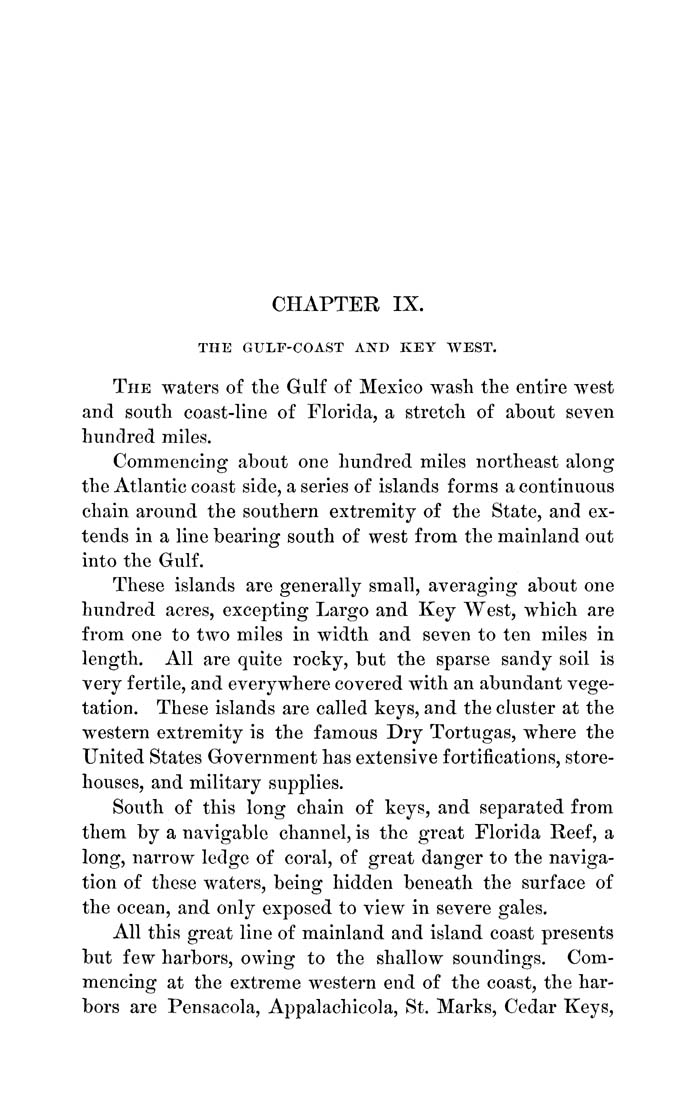CHAPTER IX.
THE GULF-COAST AND KEY WEST.
The waters of the Gulf of Mexico wash the entire west
and south coast-line of Florida, a stretch of about seven
hundred miles.
Commencing about one hundred miles northeast along
the Atlantic coast side, a series of islands forms a continuous
chain around the southern extremity of the State, and ex¬
tends in a line bearing south of west from the mainland out
into the Gulf.
These islands are generally small, averaging about one
hundred acres, excepting Largo and Key West, which are
from one to two miles in width and seven to ten miles in
length. All are quite rocky, but the sparse sandy soil is
very fertile, and everywhere covered with an abundant vege¬
tation. These islands are called keys, and the cluster at the
western extremity is the famous Dry Tortugas, where the
United States Government has extensive fortifications, store¬
houses, and military supplies.
South of this long chain of keys, and separated from
them by a navigable channel, is the great Florida Reef, a
long, narrow ledge of coral, of great danger to the naviga¬
tion of these waters, being hidden beneath the surface of
the ocean, and only exposed to view in severe gales.
All this great line of mainland and island coast presents
but few harbors, owing to the shallow soundings. Com¬
mencing at the extreme western end of the coast, the har¬
bors are Pensacola, Appalachicola, St. Marks, Cedar Keys,
|








